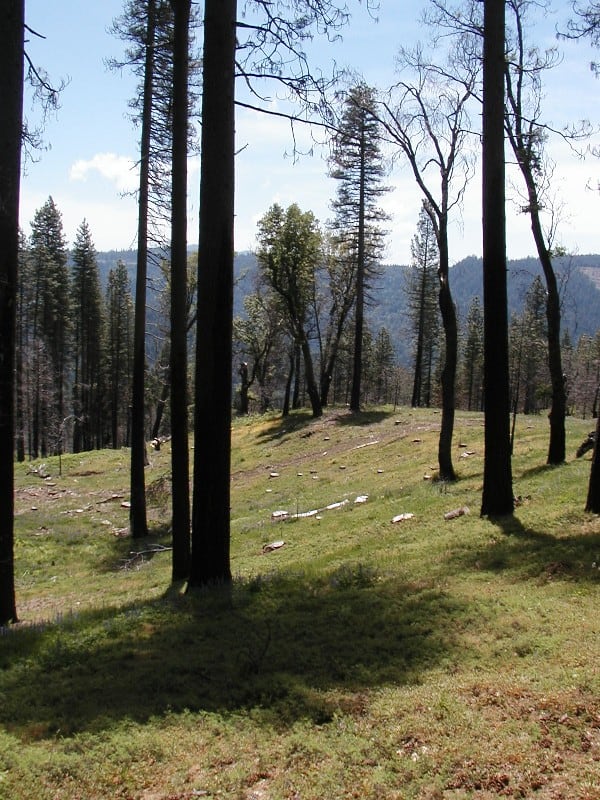So what is this “ecosystem integrity” that we are now requiring in the 2012 Planning Rule?
Just looking at it, we see the word “ecosystem” with a value word “integrity”. Could this be an expression of what Bob Lackey calls “normative science”? Sure enough, several papers have been written critiquing the concept. You can do the experiment yourself, just go to Google Scholar and search on ( “ecosystem integrity” critique) . Note: I am going to equate “ecological” and “ecosystem” integrity since they seem to be the same to most authors.
One paper I found is DeLeo and Levin (italics mine) 1997. Here’s the link
Pressure for adequate answers creates a need to devise conceptual tools, such as ecological integrity, to help scientists and resource mangers grasp the complexity of biological systems (Bernstein and Goldfarb 1995). The concept of integrity is far from a panacea for any management problem. Its definition simply reflects the capability of ecosystems, however defined, to support services, including pure aesthetics, that humans value. Ecosystem integrity is not an absolute, monolithic concept, but a multidimensional, scale- dependent abstraction; there is no unequivocal way to apply it in decision making. Measures of integrity must recognize the importance of maintaining processes that support those critical services.
What are the practical implications of these discussions? How should a manager implement notions of ecosystem integrity? The first step is to recognize that this is not the domain of the manager or of the scientist alone. Integrity reflects the ability of ecosystems to sustain services to humans, and the identification of those services can best emerge from multisector partnerships, in which all stakeholders seek agreement on the uses to which an ecosystem will be put, recognizing the linkages with other ecosystems. From such agreement on uses can come the identification of a set of measures that represent the status and trends of those services. A basic research question then arises: how to characterize the relationship between structural features of ecosystems (such as biodiversity or trophic linkages) and measures of functioning? This is an inchoate and nascent area of investigation, but one that holds tremendous potential for advancing the science of management (Daily 1997, Levin 1997, Levin and Ehrlich 1997).
Hmm. The people studying it say “there’s no unequivocal way to apply it”. Should we intentionally put it into a regulation? Isn’t this handing a court a can of worms? If it’s too difficult for us resource folks to figure out, do we just give our “inchoate” ideas to judges? I wonder whom this approach empowers and whom it disempowers.
Someone who has published often on natural resource disputes and science, Bob Lackey, has this to say in his “Seven Pillars of Ecosystem Management” here .
The terms ecological health and ecological integrity are widely used in scientific and political lexicon (Rapport, 1989; Costanza, et al., 1992; Norton, 1992; Grumbine, 1994). Politicians and many political advocates widely argue for managing ecosystems to achieve a “healthy” state or to maintain ecological “integrity.” By implication their opponents are relegated to managing for “sick” ecosystems.
Scientists often speak and write about monitoring the health of ecosystems, or perhaps the integrity of the ecosystem. There is usually the assumption that there is an intrinsic state of health or integrity and other, lesser states of health or integrity for any given ecosystem (Norton, 1992). Some scientists explicitly advocate ” . . . that maintaining ecosystem integrity should take precedence over any other management goal” (Grumbine, 1994).Much of the general public seems to accept that there must be a technically defined healthy state similar to their personal human health. After all, people know how they feel when they are sick, and so, by extension, ecosystem sickness must be a similar condition, which should be avoided. “Health” is a powerful metaphor in the world of competing policy alternatives.
For example, society may wish to manage a watershed to maximize opportunities for viewing the greatest possible diversity of birds, for the greatest sustained yield of timber, or for the greatest sustained yield of agricultural products. Achieving each goal would almost assuredly result in ecosystems that were very different, but equally “healthy.”
The debate is really over defining the “desired” state of the ecosystem, and secondarily, managing the ecosystem to achieve the desired state. Phrased another way: What kind of garden does society want (Regier, 1993)? There is no intrinsic definition of health without a benchmark of the desired condition. In ecosystem management, scientists should avoid value-laden terms such as “degradation, sick, destroy, safe, exploitation, collapse, and crisis” unless they are accompanied with an explicit definition of what the desired condition of the ecosystem is as defined by society. The word “society,” as used here, includes only humans.
In philosophical terms, the problem with “health” is how one links “is” and “ought.” For example, an ecosystem has certain characteristics — these are facts on which all analysts who study the ecosystem should be able to agree. Characteristics such as species diversity, productivity, and carbon cycling are examples. If the same definitions and the same methods are used, all analysts should come to the same answer within the range of system and analytical variability. The “ought” must involve human judgement — it cannot be determined by scientific or technical analysis (Shrader-Frechette and McCoy, 1993). The concept of “health” has a compelling appeal, but it has no operational meaning unless it is defined in terms of the desired state of the ecosystem.
Again, the 2012 Planning Rule says that “plans should promote ecological integrity”, yet we learn from the literature that “ecological integrity” is a flawed concept.
So,we might ask, how does the planning rule define ecological integrity?
We find it in 219.19
“The quality or condition of an ecosystem when its dominant ecological characteristics (for example, composition, structure, function, connectivity, and species composition and diversity) occur within the natural range of variation and can withstand and recover from most perturbations imposed by natural environmental dynamics or human influence.”
I couldn’t find “natural range of variation” in the rule, which seems odd because plans need to promote integrity, you tell if something has integrity because it’s within NRV.. so NRV becomes pretty crucial.
Conveniently, it is now defined in the Directives, in the Zero code chapter.
Natural range of variation (NRV). Spatial and temporal variation in ecosystem characteristics under historic disturbance regimes during a reference period. The reference period considered should be sufficiently long to include the full range of variation produced by dominant natural disturbance regimes, often several centuries, for such disturbances as fire and flooding and should also include short-term variation and cycles in climate. “Natural range of variation” (NRV) is a term used synonymously with historic range of variation or range of natural variation. The NRV is a tool for assessing ecological integrity, and does not necessarily constitute a management target or desired condition. The NRV can help identify key structural, functional, compositional, and connectivity characteristics, for which plan components may be important for either maintenance or restoration of such ecological conditions.
OK, so let’s get the logic here.
Plans are required to “promote” ecosystem integrity in a regulation.
Ecosystem integrity is defined in the regulation as equal to (dominant characteristics within NRV) AND (resilient to disturbance)
Yet, being with NRV is “not a target”. But based on these definitions you can’t have EI without being within NRV. And EI is a target. If I (integrity) is a target and I= (NRV) AND (Resilience) then isn’t NRV also a target implicitly?
If I want cookies that have nuts AND chocolate chips, then aren’t I saying that they need to have nuts?
It makes my few remaining (after trying to read the directives) neurons melt. But as during the COS debate on whether ecological sustainability should be “primary”, I still don’t understand what it means in practice. During the selected historic period, you may not have had roads on the Angeles NF; you didn’t have jet aircraft flying over Weminuche Wilderness. So we just start deleting activities until we get to those of some chosen “historic period?” Is this what the public wants from its public lands?
Plus now we have climate change, so in many cases returning to HRV with any distribution of any species may be impossible. Why would we want to put into regulation impossible implicit or explicit targets?






